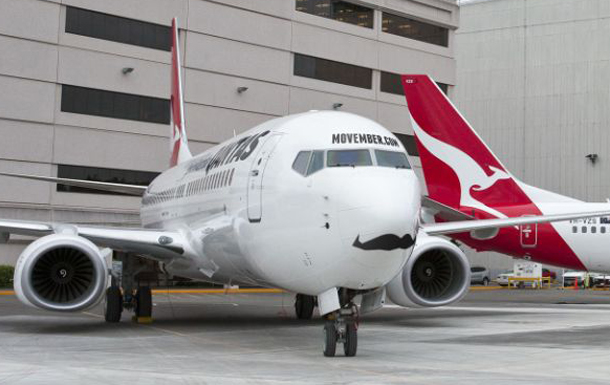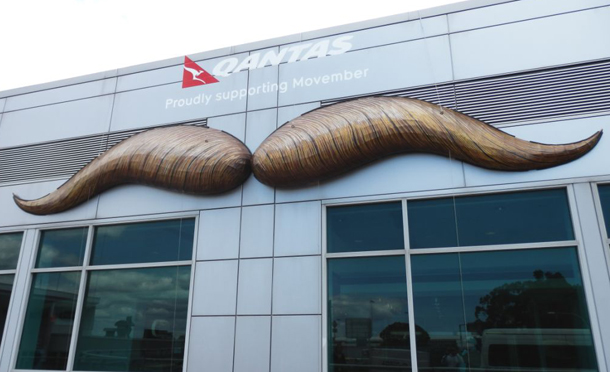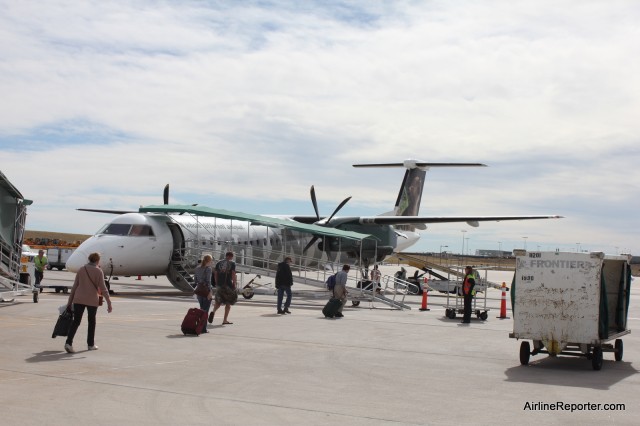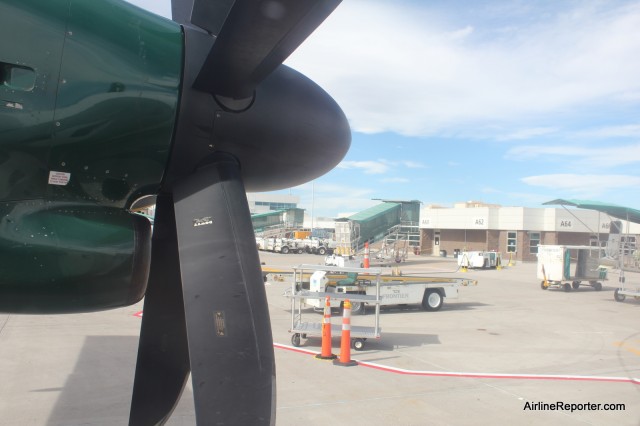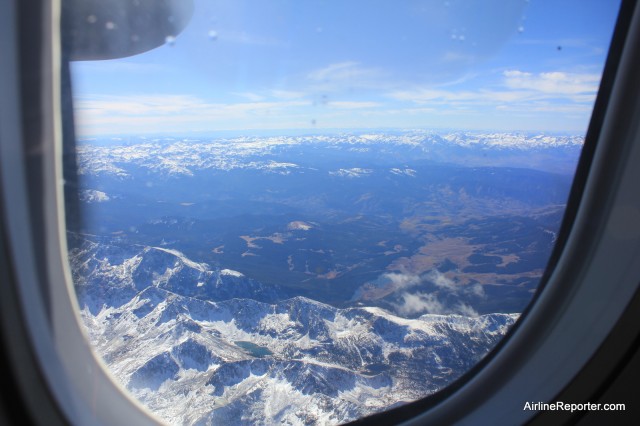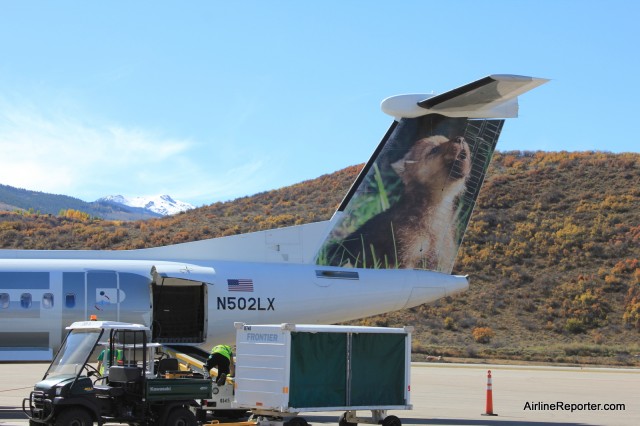In the unlikely event you have a very crazy flight, these flight attendants are making sure you will be prepared.
Wow, it has been almost a year since I did my last Ultimate Airline Livery Challenge. I have been meaning to do another, but obviously I did not get around to it until now. I did try a Landing Gear Contest back in March, but I miss the livery contest.
Since my last livery challenge, I have many more new readers, so I guess I should explain a bit on what this is about.
I show you a few 100×100 images of airlines and it is your job to tell me #1 what airline the image belongs to and #2 what kind of airplane is it? I don’t need to know exact model, but basic (ie “Boeing 777” vs “Boeing 777-300ER”).
Do not leave your answers in the comments, since others will be able to see them. Email your answers to me at da***@*************er.com.
Those of you who get all the liveries and airplanes correct will win some super sweet AirlineReporter.com stickers that I will send you. Plus a big shout-out (and links to a website of choice) on the answer page. The contest will end on Friday whenever I post the answers (probably in the morning, PT).
Do not stress too much. If you only know a few, that is okay, still shoot me an email. Have fun and good luck!
For some reason, it seems that November is connected closely with men growing facial hair. A few years back the Prostate Cancer Foundation of Australia started promoting Movember with men growing mustaches to support prostate cancer research. Think of it as a pink ribbon to support breast cancer, but involving hair.
Qantas CEO, Alan Joyce is a survivor of prostate cancer and obviously the company has a special motivation for this. ’œAs a survivor of prostate cancer, I am passionate about bringing greater awareness to men who are most at risk,” Joyce stated in a press release.
A 737 is not the only Qantas property to get the hairy treatment. A giant moustache has also been installed on the exterior of Sydney Qantas Domestic Airport, Terminal 3.
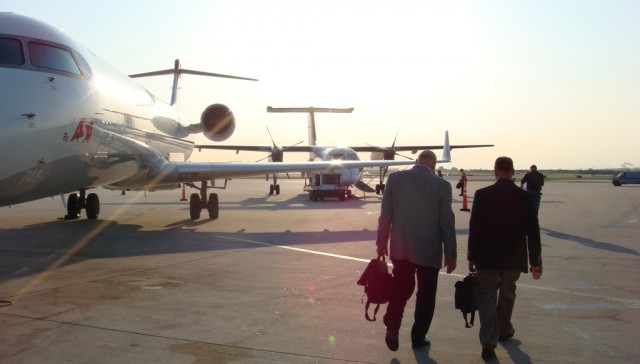
Most times when flying, it will be a great experience. A few times there might be somethings that go bad, but is it the end of the world? Nah.
One of the positive parts of running this blog are all the emails I get from readers and random people. Some are amazing story ideas, some provide great conversation and others are looking for some advice on a bad situation they had with an airline. I try to make an effort to write everyone back, no matter what the email is about (or how crazy it might be). Although some “I hate airlines” emails I receive are legitimate, most letters that I receive are… well… stupid.
I do not mean to make fun of people that feel they had a horrid experience with an airline, but most of the “omg please share this horrid story, so others will not have to go through the same thing” emails are pretty ridiculous to say the least. It just goes back to the idea that so many people are looking for any reason to hate on an airline.
Most emails start out by saying that the person will never fly the particular airline ever again. Just a word of advice; if you are looking to get the attention of an airline, I might suggest not starting a letter that way. I think that airlines see so many threats like this, that they mean nothing anymore. Personally I know many people who have made threats like this, but still end up flying the airline again in the future.
When skimming to see how long an email is going to be (many of these rants are quite large), I know it is going to be good when I can spot a few swear words. This normally means the person wrote their letter while still angry and even some I have even received while the person is still on their flight. Again, I would kindly suggest that cutting out your swear words will probably get your further versus using them. Airlines get a lot of crazy people just yelling at them for no real reason, so to stand out, I would suggest being calm and collective and providing a rational argument on why they might have messed up.
Don’t get me wrong. I am not some calloused person who can’t feel bad when someone truly has a bad travel experience. But out of the 100 or so emails I have received over the years, I can honestly say that about five were ones that I felt needed some actual attention. I cannot tell you how many times it turns out that the person’s flight was delayed, their luggage was lost or they can’t believe they had to pay to check their bags. I mean really? What am I supposed to do with these? What are airlines supposed to do with these? Yes, they might be annoying, but surely not something to get so upset about.
The most common letters deal with airline delays. The majority of those end up relating to weather, which the airlines have no control over. Yes, it frek’n sucks, I have been there, done that and hated it. Even if the airline might drop the ball on a few things, it is not easy organizing a huge cancellation.
Probably the second largest complaint I receive is about lost luggage. Of course, no one likes it when an airline loses their luggage. I know it is a huge pain, but it is one of the risks with traveling. Airlines are required to compensate you, if they lose your luggage and yes, if they do not, then that is something to truly be upset about. But am I really supposed to write a story about a passenger’s luggage being lost? Amazingly, many upset passengers expect just that. I will suggest people to follow up with me if they do not hear back from the airline for proper compensation, but to date, I have had no one follow through.
Really, If having your flight delayed for a few hours or have a bag lost is one of the worst things you have gone through in life, things aren’t going to shabby for you. I think people need to stop and look at the bigger picture every once in a while. Mistakes happen with airlines and almost every other business out there. If you are the person who goes through the situation, yes it sucks. But this is what we call life and the benefits to travel around the world in a few hours.
Next time you are fuming and thinking of sending off a heated letter to someone, stop and think if it is really that big of a deal. And if you give yourself some time and it turns out that you still feel something was done inappropriately, by all means send away.
As we approach a very busy season of airline travel, remember to take a deep breath and relax. Weather is very likely to cause delays, people are already on edge already and planes are going to be very crowded. I find that keeping a smile on your face does wonders at not only keeping yourself sane, but also those around you.
Image: BetaOps9
Being based in Seattle, I have had plenty of opportunities flying on Bombardier Q400s via Horizon Air Alaska Airlines. When I had the opportunity to recently fly from Seattle to Aspen, for a ride on a Beechcraft Starship, I did not have too many choices on what to fly from Denver (DEN) to Aspen (ASE). I could either fly on a United Airlines CRJ 700 (operated by Skywest) or a Frontier Airlines Q400 (operated by Lynx Aviation). Being the aviation fan that I am, I chose my airline based on the aircraft type and wanted to experience the Q400 flying into Denver — lucky for me, it was the cheaper of the two tickets as well.
When landing at DEN from Seattle (SEA), I had about an hour and a half layover. This was a good thing, since the Q400s are located pretty much at the end of the airport, down some stairs and at the end of a very long and narrow hallway. I kind of wish I would have spent more time in the main terminal, since the waiting area for regional flight do not have too much to offer.
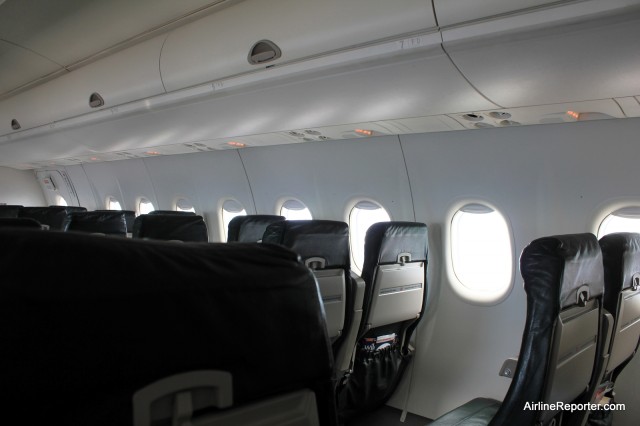
The Q400 is not known for being very roomy, but this flight was almost empty, so I had plenty of room.
Our flight was pretty empty, with about 20 people flying on the 70 passenger aircraft. Boarding was easy with one announcement made for people to start boarding and it only took a few minutes. One of the attractive parts about flying on a regional carrier is the increased chance of boarding on the tarmac. Although most air travelers probably hate boarding this way, for an airline fan, nothing can beat it.
When boarding there was a cart that passengers could put their carry-ons to be placed in the cargo-hold and not in the cabin. All I had was a back-pack, so I opted to bring that on board… bad call. Even though it was small (in carry-on standards) it still wouldn’t fit in the overhead bin. Lucky for me, I had no problems storing under an empty seat, but if the plane was full, stuffing a back-pack under my seat would have really taken a lot of my space.
For weight distribution, everyone sat near the back of the plane. I was in row 7 and I was the farthest to the front and there was no one even around me.
Unlike Alaska’s Q400s, Frontier’s have sun screens and the seats are able to recline. Sure, nice touches, but this flight was only about 45 minutes, so these features meant little to me.
Engine start up on a turboprop is always my favorite part of the flight and those sweet Pratt & Whitney PW150A engines did not disappoint. Being in row 7, I had a favorable view watching them slowly start up and hearing the growl of the engines. Again, maybe not something the majority of passengers would enjoy, but it is one of the reasons I choose to fly on a Q400 when I have other options.
As I normally do, I had my camera at the ready to take photos as we took off. Yes, you can yell at me for keeping an electronic on while taking off, but there is no way that a camera is going to affect an airplane. It is very rare for a flight attendant to say something, but this was one of those flights. I was told that I had to turn off my camera and had to wait until we reached 10,000 feet before turning it on… sigh — okay fine. I may not agree with the rules, but I am not going to argue with the person just trying to do their job.
We were also told that we would not be able to turn on our cell phones during the entire flight. Not just airplane mode, but it couldn’t be on at all. My guess is that since we never flew very high, we would still be able to get reception during the flight and possibly cause interference. Either way, I listened and kept my phone off and enjoyed the view out the window.
The short flight was pretty bumpy, especially near the end. Again, most people probably wouldn’t like the idea of flying on a turboprop in turbulence, but I actually kind of enjoy it . It was obvious that this plane had been in turbulence before. Even when the bumps were not that bad, but the overhead bins were shaking like it was a huge storm and competed with the engines on making the most noise.
The weather got worse as we got closer to ASE and with the rapid descent, the flight attendants did not even get up to do their final safety check, but asked us to make sure our seats were up and belts buckled for landing. Okay, I can understand that, but they never got up during the entire flight anyhow. Not that I need a drink during a 45 minute flight, but at least getting up once to check on the passengers would probably be a good idea, instead of sitting in your jump seat chit-chatting with each other.
Flying into Aspen was quite beautiful and a bit aggressive. We bounced around as heading down at a steep angle to make it into the airport. As an aviation lover, this flight was great, but I could see how most people would not think the same way. But, if you are looking to fly into Aspen, you do not have much of a choice, other than flying on a CRJ700 or a private plane. Good thing I love flying and most people are willing to do it to experience Aspen.

